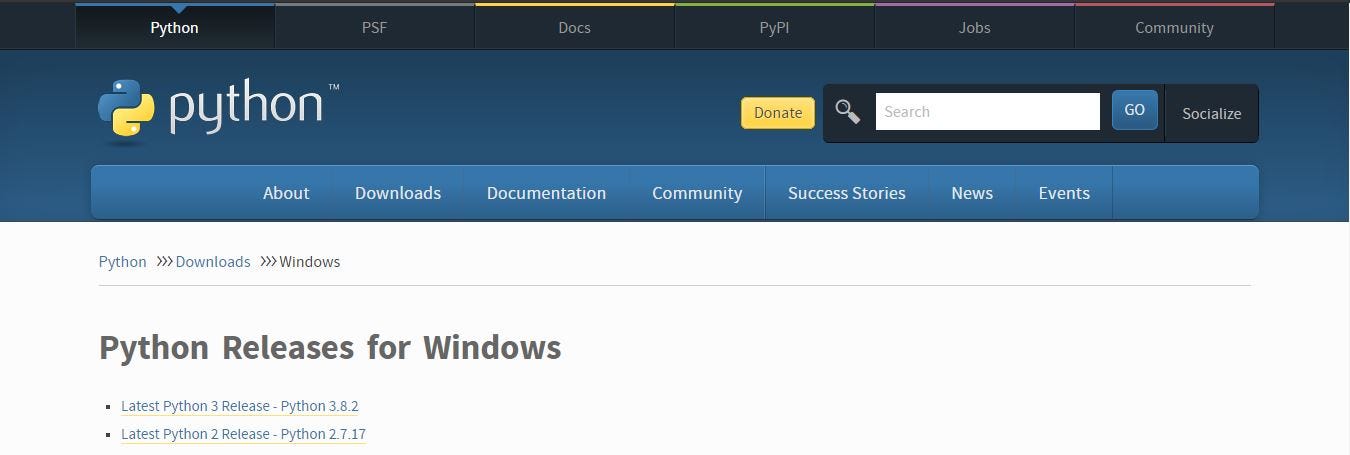When I am using a big term like WEB SCRAPING there has to be some uniqueness in the description also, so here is it: Web scraping is an automated method to extract huge large data from websites. The data usually is in unstructured format. Web scraping helps collect these unstructured data and store it in a structured form. Ways to Collect Data. I started scraping the site using Beautiful Soup following the steps below.Before you start, make sure you have installed Beautiful Soup. #in terminal pip install beautifulsoup4 #in Jupyter Notebook!pip install beautifulsoup4 Basic steps to using Beautiful Soup: 1. Import all the necessary packages. Import requests from bs4 import. The Jupyter notebook is written in an interactive, learning-by-doing style that anyone without knowledge of web scraping in Python through the process of understanding web data and writing the related code step by step. Stay tuned for a streaming video walkthrough of both approaches. Web scraping is about creativity to make a script that should retrieve 100 percent information you need from a website that you want. I usually work with Python to transform and analyze data, that.
Web Scraping (Scrapy) using Python. In order to scrape the website, we will use Scrapy. In short, Scrapy is a framework built to build web scrapers more easily and relieve the pain of maintaining them. Basically, it allows you to focus on the data extraction using CSS selectors and choosing XPath expressions and less on the intricate internals.
How can we scrape a single website?In this case, we don’t want to follow any links. The topic of following links I will describe in another blog post.
First of all, we will use Scrapy running in Jupyter Notebook.Unfortunately, there is a problem with running Scrapy multiple times in Jupyter. I have not found a solution yet, so let’s assume for now that we can run a CrawlerProcess only once.
In the first step, we need to define a Scrapy Spider. Download audacity for mac. It consists of two essential parts: start URLs (which is a list of pages to scrape) and the selector (or selectors) to extract the interesting part of a page. In this example, we are going to extract Marilyn Manson’s quotes from Wikiquote.
Let’s look at the source code of the page. The content is inside a div with “mw-parser-output” class. Every quote is in a “li” element. We can extract them using a CSS selector.
Asian Buttercup Plant Details. Scientific Name: Ranunculus asiaticus ′Bloomingdale Pink Shades. Asian buttercup. Ranunculus asiaticus, the Persian buttercup, is a species of buttercup native to the eastern Mediterranean region in southwestern Asia, southeastern Europe (Crete.
What do we see in the log output? Things like this:
It is not a perfect output. I don’t want the source of the quote and HTML tags. Let’s do it in the most trivial way because it is not a blog post about extracting text from HTML. I am going to split the quote into lines, select the first one and remove HTML tags. Best cheeses for mac and cheese.
The proper way of doing processing of the extracted content in Scrapy is using a processing pipeline. As the input of the processor, we get the item produced by the scraper and we must produce output in the same format (for example a dictionary).


It is easy to add a pipeline item. It is just a part of the custom_settings.
There is one strange part of the configuration. What is the in the dictionary? What does it do? According to the documentation: “The integer values you assign to classes in this setting determine the order in which they run: items go through from lower valued to higher valued classes.”
What does the output look like after adding the processing pipeline item?
Much better, isn’t it?
I want to store the quotes in a CSV file. We can do it using a custom configuration. We need to define a feed format and the output file name.

There is one annoying thing. Scrapy logs a vast amount of information.
Fortunately, it is possible to define the log level in the settings too. We must add this line to custom_settings:

Create Function In Jupyter Notebook
Remember to import logging!




